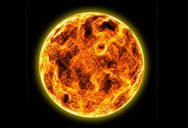Converting energy in the ground into low-cost heating and hot water for your home
A ground source heat pump is an electrically powered system that taps the natural energy stored in the earth to heat your home.
The systems that we supply could provide all of your heating and hot water need. This system utilises the energy in the ground to provide all the heating and hot water your home requires. The principle is simple, and the results is low-cost comfortable heating that uses sustainable energy and causes no direct emissions or other damage to the environment.
For every single kilowatt of electricity used to power the heat pumps, this system could generate four kilowatts or more in energy for your home!
What’s more, it also helps to conserve the earth’s dwindling supplies of non-renewable fossil fuels – coal, gas and oil.
Government initiatives and grants that are available are constantly changing – please call us on 01568 613060 today.
Ground source heat pumps:
Your questions answered
What is sustainable energy?

Sustainable energy is best thought of as energy which can be replenished within a human lifetime and which causes no long-term damage to the environment. Solar energy, wind energy and geothermal energy, amongst others are all self sustaining. They all have sources that cannot be depleted. Extended use of these energy sources aids the conservation of other non-renewable energy sources such as fossil fuels.
How does a heat pump work?
The technology inside a heat pump works on similar principles to those of a domestic fridge. Heat pumps take advantage of the principles of thermodynamics in order to achieve their results. A water and glycol mixture is pumped around the collector circuit and causes the refrigerant in the evaporator to turn into a gas. This refrigerant passes through the compressor, causing the temperature to rise significantly. The hot gas moves to the condenser, where it condenses and the latent energy is released in the heating circuit.
How is energy collected from the ground?
There are two options to obtain the energy from the ground.
Horizontal Collector
In a horizontal collector, lengths of pipe are buried underground to a depth of around 1metre. This is a good solution if the property in question has enough land to accommodate this collector.
Vertical Collector
A bore hole is drilled to a depth of between 60 and 200 metres, and the collector is fed into the hole. A vertical collector minimises the amount of land required on the surface of the collector.
Will I need a boiler?
In the majority of circumstances – the answer is no.
Can I keep my existing radiators?
Ideally, for maximum benefit and efficiency, a heat pump is best used with under floor heating, but oversized radiators are also an option.

